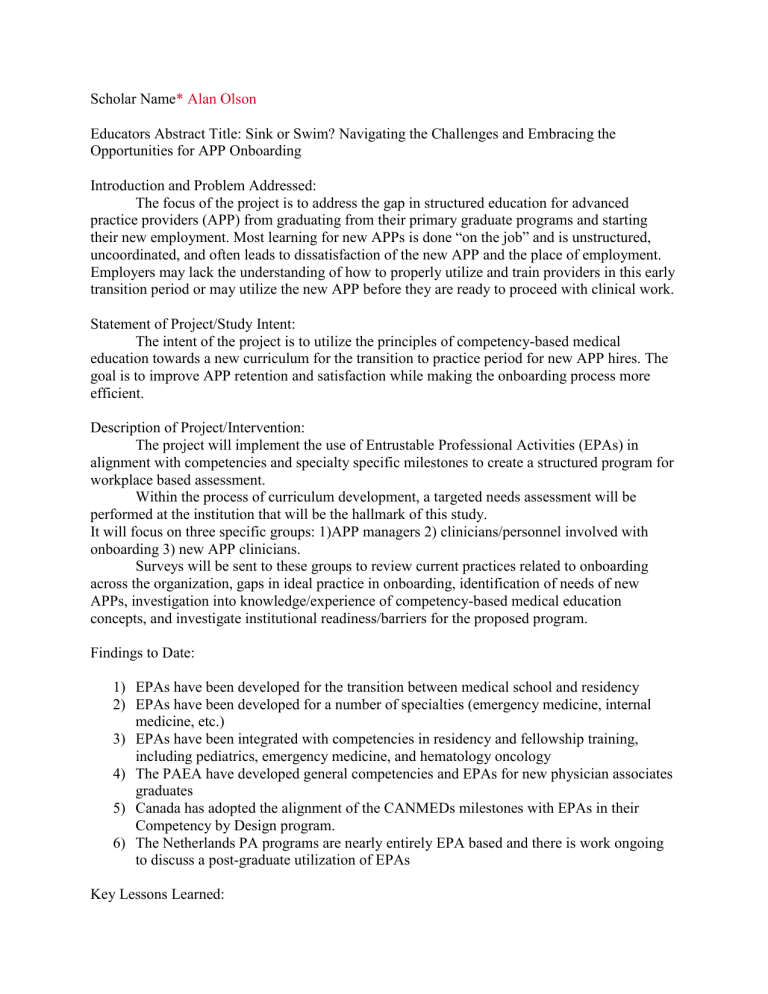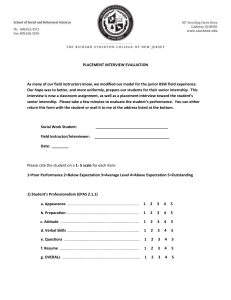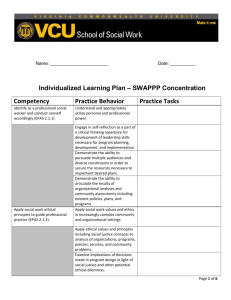
Scholar Name* Alan Olson Educators Abstract Title: Sink or Swim? Navigating the Challenges and Embracing the Opportunities for APP Onboarding Introduction and Problem Addressed: The focus of the project is to address the gap in structured education for advanced practice providers (APP) from graduating from their primary graduate programs and starting their new employment. Most learning for new APPs is done “on the job” and is unstructured, uncoordinated, and often leads to dissatisfaction of the new APP and the place of employment. Employers may lack the understanding of how to properly utilize and train providers in this early transition period or may utilize the new APP before they are ready to proceed with clinical work. Statement of Project/Study Intent: The intent of the project is to utilize the principles of competency-based medical education towards a new curriculum for the transition to practice period for new APP hires. The goal is to improve APP retention and satisfaction while making the onboarding process more efficient. Description of Project/Intervention: The project will implement the use of Entrustable Professional Activities (EPAs) in alignment with competencies and specialty specific milestones to create a structured program for workplace based assessment. Within the process of curriculum development, a targeted needs assessment will be performed at the institution that will be the hallmark of this study. It will focus on three specific groups: 1)APP managers 2) clinicians/personnel involved with onboarding 3) new APP clinicians. Surveys will be sent to these groups to review current practices related to onboarding across the organization, gaps in ideal practice in onboarding, identification of needs of new APPs, investigation into knowledge/experience of competency-based medical education concepts, and investigate institutional readiness/barriers for the proposed program. Findings to Date: 1) EPAs have been developed for the transition between medical school and residency 2) EPAs have been developed for a number of specialties (emergency medicine, internal medicine, etc.) 3) EPAs have been integrated with competencies in residency and fellowship training, including pediatrics, emergency medicine, and hematology oncology 4) The PAEA have developed general competencies and EPAs for new physician associates graduates 5) Canada has adopted the alignment of the CANMEDs milestones with EPAs in their Competency by Design program. 6) The Netherlands PA programs are nearly entirely EPA based and there is work ongoing to discuss a post-graduate utilization of EPAs Key Lessons Learned: Transition to Practice programs can help bridge the gap left between PA school and employment. Utilizing the structure of the integration of EPAs, competencies, and milestones can provide the framework for a Transition to Practice Program. Unanswered Questions: EPAs are likely a novel concept to many people involved in onboarding, what will be the overall acceptance and path forward for implementation?





